Broadcast production partner TopVision ensures authenticity in football broadcasting
16 October 2025

Sound experts Ecki Kehrer and Daniel Kersten provide insights into their work and test the new MKH 8018 stereo shotgun microphone
Wedemark, October 2025 – Before a German league football match is broadcast, sound engineer Ecki Kehrer and sound technician Daniel Kersten from production company TopVision go into action. Well established in sports and football productions for more than 30 years, TopVision has been an independently operating subsidiary of TVN Live Production since 2024, providing the commissioning producer Sportcast – and therefore German football fans – with thrilling outside broadcasts direct from the stadiums. Pitch microphones and wireless systems for interviews bring all the excitement of a live soccer match into TV and streaming audience’s living rooms. So what does a typical football Saturday look like for Kehrer and Kersten and what do they think of Sennheiser’s new MKH 8018 stereo shotgun microphone?
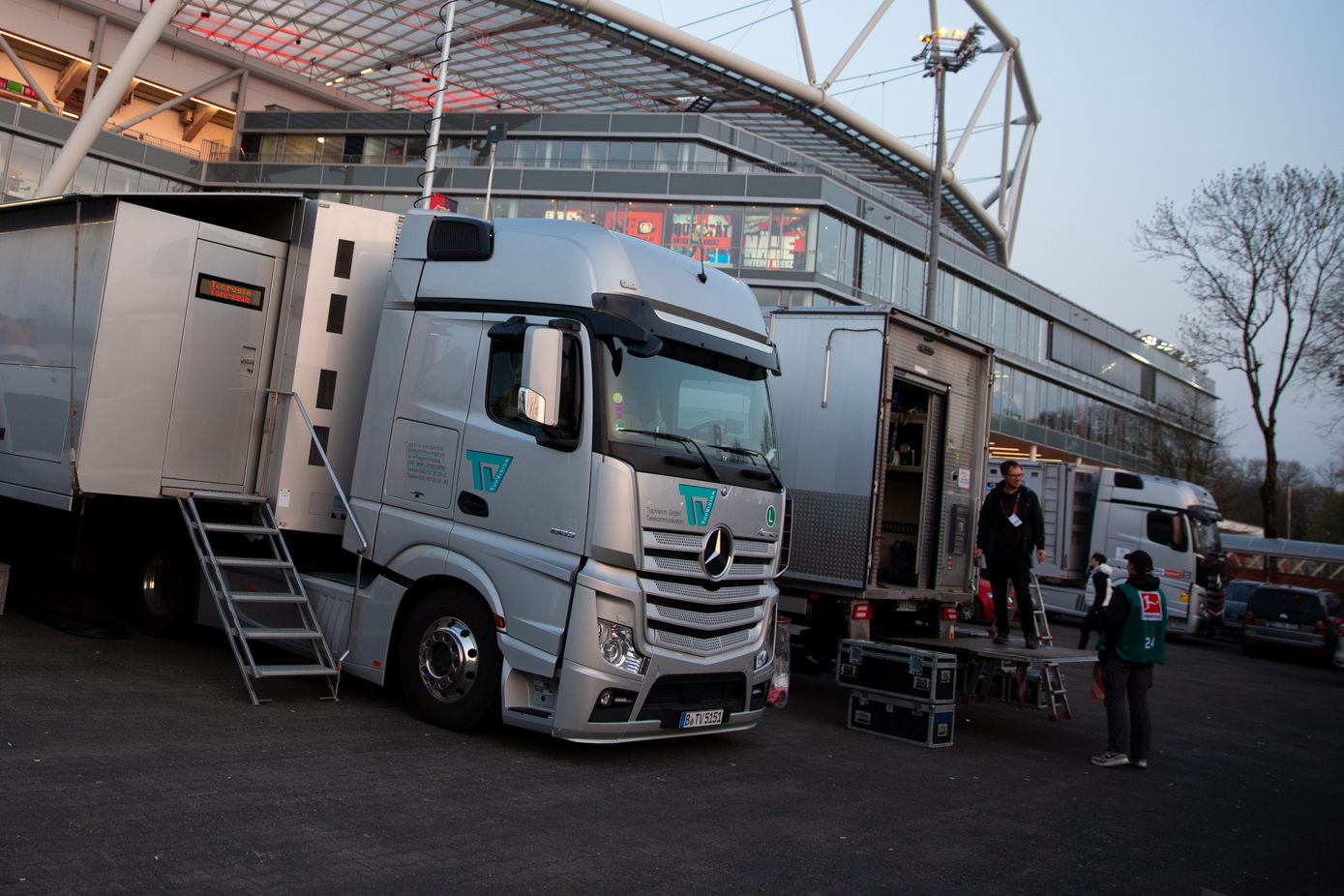
Three days before the match: preparation is the key!
A few days before a match, TopVision is handed the production plan drawn up by Sportcast. “This gives a detailed specification of how the production is to be carried out,“ explains Ecki Kehrer. ”For example, how many cameras there are, how many reporters will be coming, how many broadcasters we will be serving and how many additional commentators we need to provide for. Do they need a monitor, do they need a commentary box place that is ‘fully equipped’ or only ‘partially equipped’? And our team then gets to work with the preparations.”
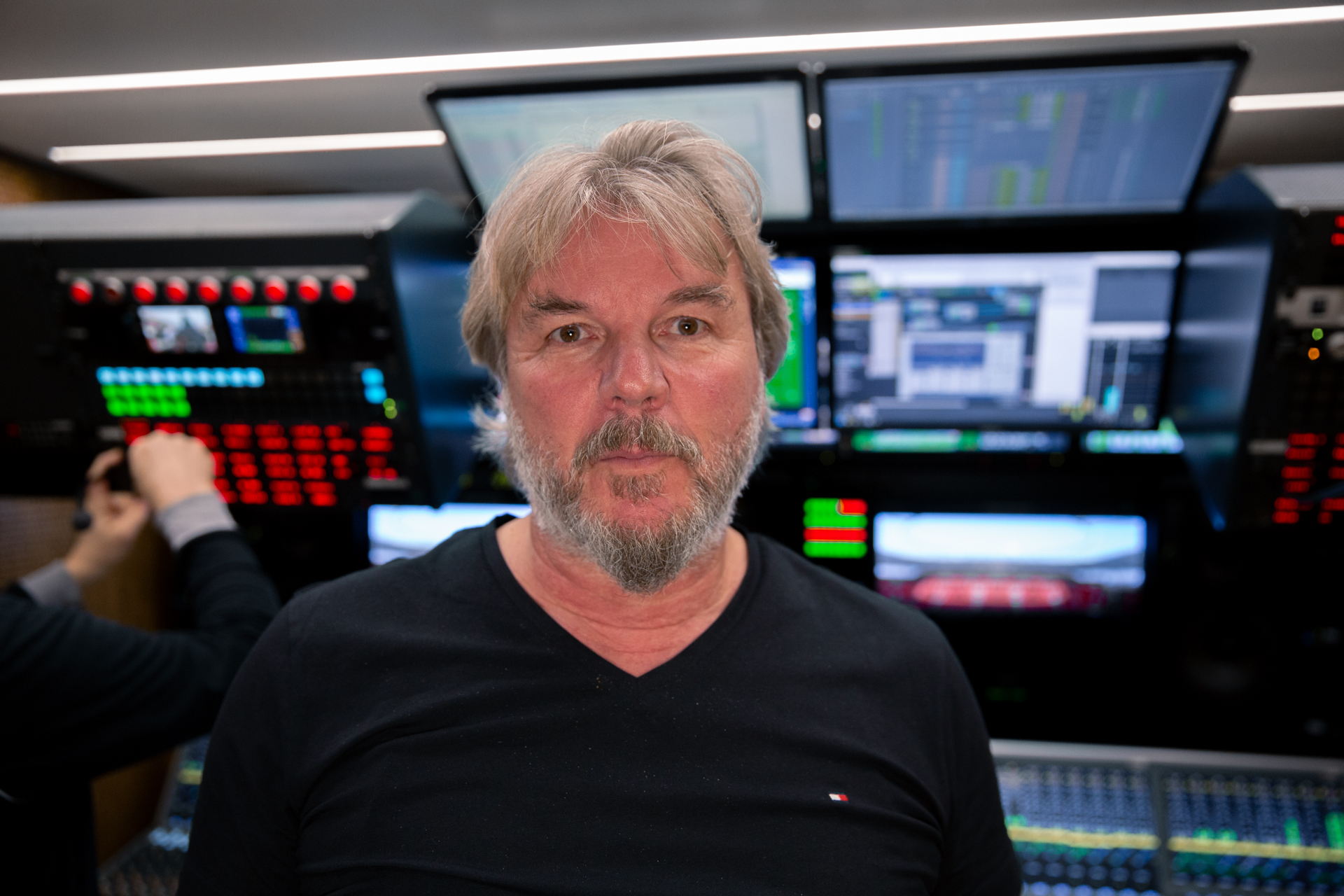
Match day!
On the day of the broadcast itself and six-and-a-half hours before kick-off, Kehrer and Kersten start work in the production truck, which has already been parked in the stadium’s broadcast compound. “It might sound incredible, but our OB van is a vehicle that is much bigger inside than its external dimensions,” Kehrer explains. “The side expansions make the van twice as big as the space it takes up when it’s on the road. The big OB van provides us with four rooms, and video and audio control. Parked alongside is the tender van, our support vehicle that contains all our equipment: cameras, microphones, monitors, everything we need. All of this equipment is loaded onto a trolley and taken to the side of the pitch by one of our colleagues, who sets up all the microphones – and hopefully manages to get some help with laying the cables. After all, together with the camera cables, we’re talking about a couple of kilometres!”
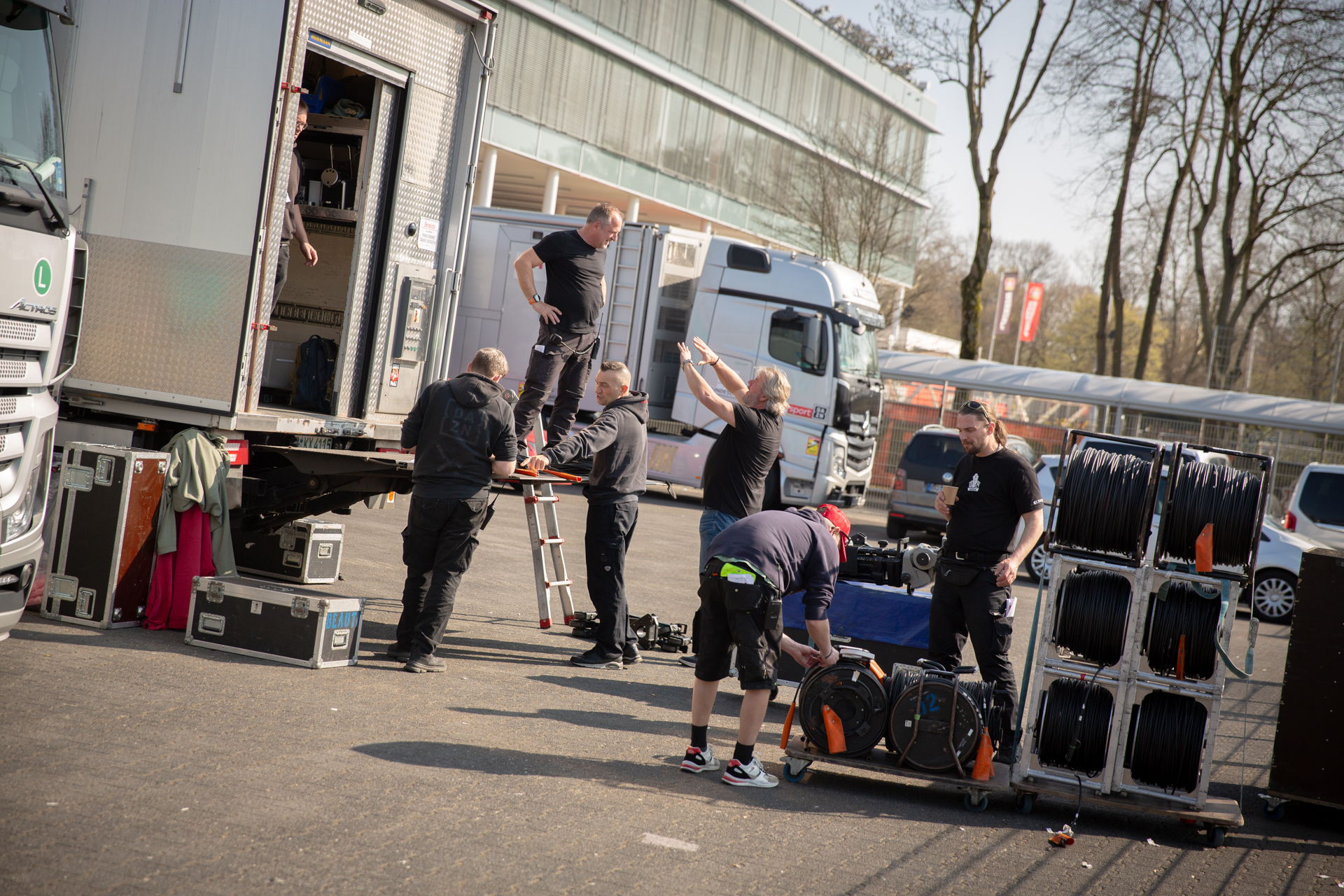
Commissioning producer Sportcast specifies the equipment to be used in the stadium to ensure that all league games are broadcast to a consistently high standard. “For the pitch, that means 17 microphones, three behind each goal, one in the centre and two directed towards the 5-metre corners,” explains Daniel Kersten. “Microphones are set up at all four corners, and at the main camera position (Camera 1), there are three microphones at the two 20-metre positions and at the half-way line, while on the opposite side there are four microphones at the 22-metre positions and at the 40-metre position. In addition, we also have ambience microphones to pick up the crowd noise.”
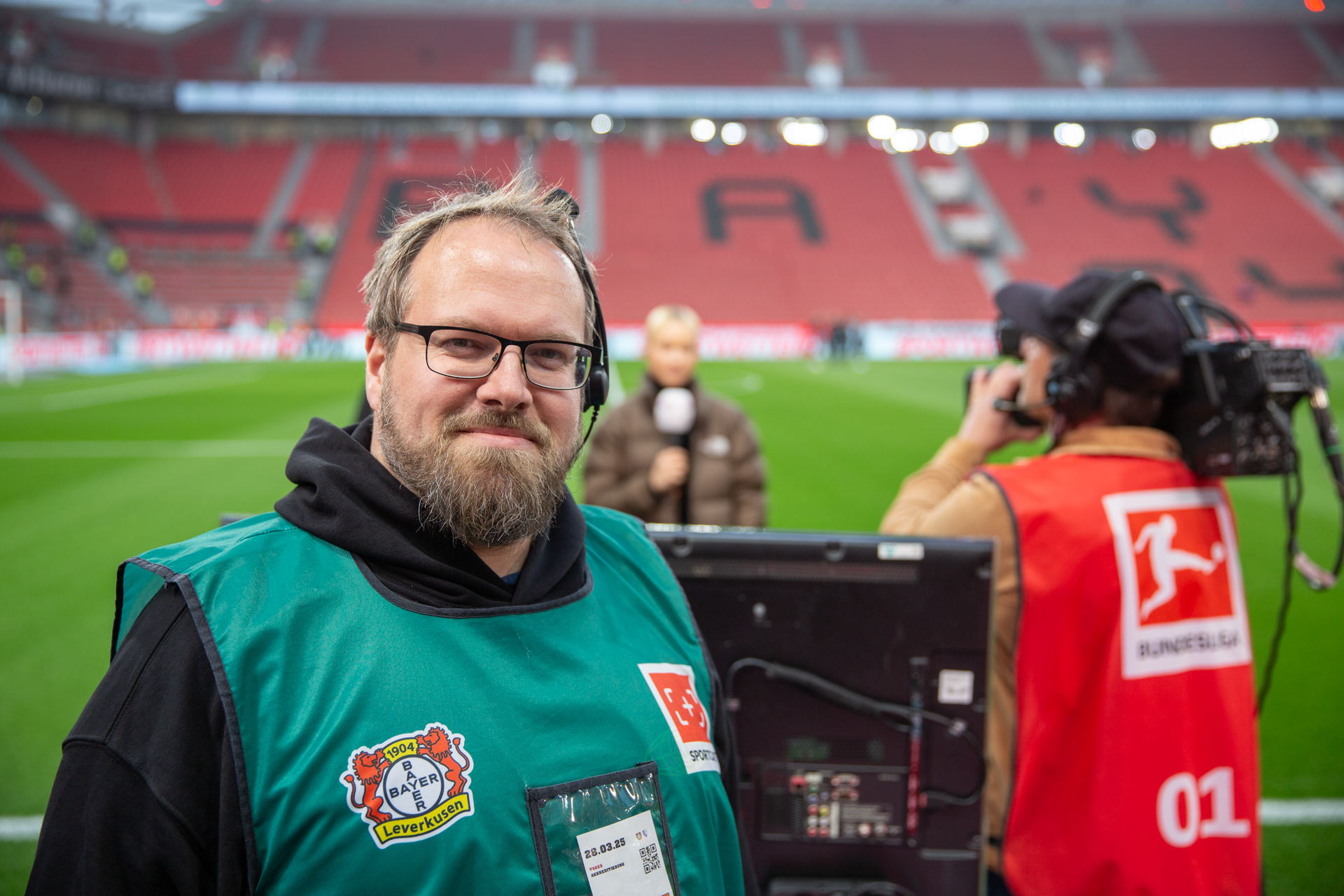
While MKH 8060 and MKH 8070 shotgun microphones were used as pitch microphones in the past, the new specifications now mean that MKH 8040 with a cardioid pick-up pattern are positioned around the edges of the pitch. As Kehrer points out: “You sometimes want to hear the ‘close balls’, in other words the sound of the players kicking the ball, but you also don’t want to be too focused, because the microphones are static and no one is moving them around, as would be the case with shotgun mics.” Kersten adds: “In our set-up, it’s the sheer number of microphones that makes all the difference. When you’ve got 17 microphones spread around the pitch, directionality is not that important. We do have directionality, of course, but because of the large number of microphones, it works really well with the short ones.”
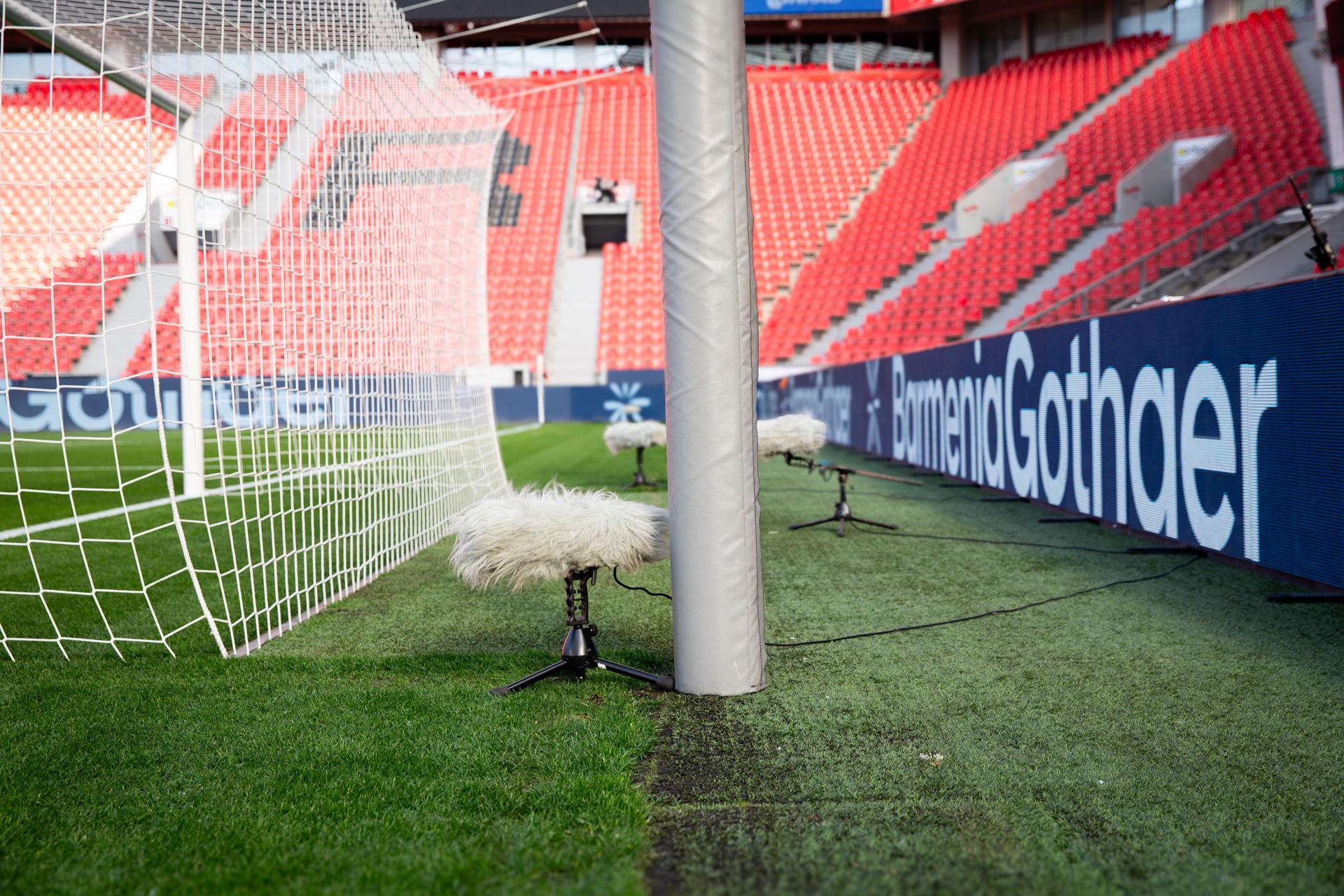
All microphone cables are connected to a rack at the edge of the pitch. A STAGETEC router linked to the OB van enables TopVision to provide 32 transmission channels in both directions.
The microphones themselves can sometimes become unintended targets. “This occurs more often than you might think, especially when both teams are warming up on the pitch,” Kersten explains. “We start transmitting the broadcast signal an hour before the match kicks off, so all the microphones are already in place. And maybe three or four times in a season, one of the microphones gets kicked away. You’re either lucky and you can just put it back where it was. Or you’re unlucky and something gets broken.”
Kehrer adds: “The microphones near the goal are particularly at risk. We’ve had players who liked to vent their frustration after a foul or after missing a goal by giving the microphone a good kicking. Unfortunately, things like that can happen occasionally.”
Optimum service for the customer
In addition to the pitch microphones, Kehrer and Kersten also set up the necessary wireless equipment. TopVision offers a range of different packages depending on what the broadcast customer wants to provide to its TV or streaming audience, including the popular teams of presenters and pundits, field reporters who carry out the interviews and, of course, guests, such as players, coaches, officials or other VIPs.
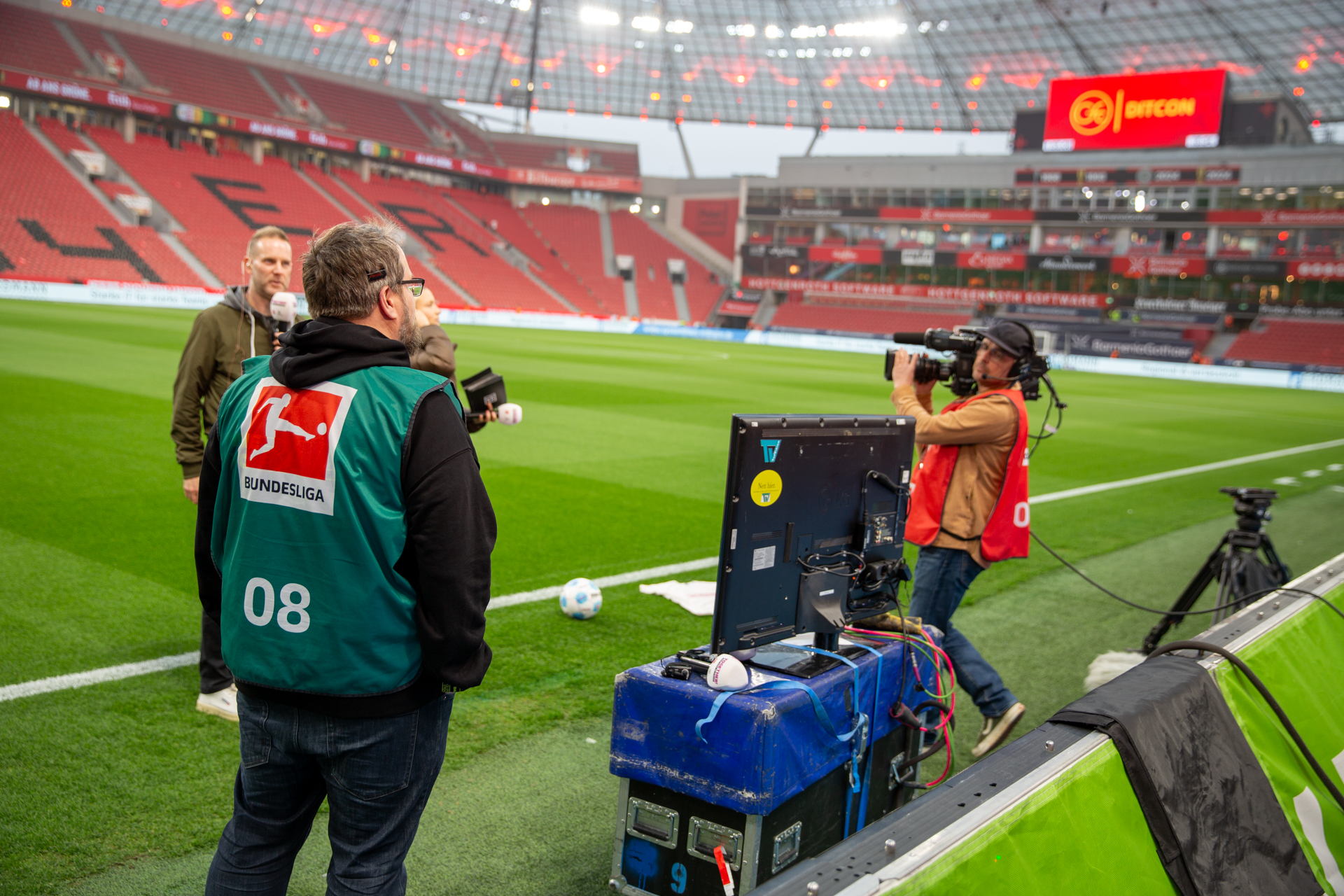
Kersten: “Wireless microphones and in-ear monitoring are mainly used for the presenters in the stadium. So you first take a look at the venue and see where this might fit and what the customer specified. Sometimes, the packages are small and not too much work is involved. But occasionally, the packages are much bigger and the amount of effort required, together with our colleagues in the OB van, is quite considerable. If a customer wants to walk around the pitch with a camera, we also have to make sure that the sound is transmitted properly and without dropouts. And that requires quite a bit of planning: Where do we put the rack and the antennas? Where can we place additional antennas so that the OB van can switch from one antenna to the next?”
When asked whether all of the interviews on the pitch are scheduled in advance or whether there is still room for the occasional surprise where equipment needs to be made available on the spot, Kehrer explains: “Most of it is planned before the match and there are various fixed positions on the sidelines and in the mixed zone where interviews and presenting can take place. During big matches, there can be as many as 30 broadcast companies in the compound, and everyone wants to do interviews! So everyone has their designated area, everything is fixed in advance, and everyone has purchased their package beforehand.”
“But there can be deviations from this, of course, especially during the weekly matches, when the producer says: “Today we’ll have to do the interview at the press conference because one player doesn’t want to come out and talk to us.” You really have to be prepared for things like that, because you can’t just run cables into the press centre or the changing room. That’s why we recently bought Sennheiser equipment again, an on-camera EK 6042 two-channel receiver, which picks up the audio from both the reporter and the interview partner. Funnily enough, you can go wherever you want with a camera, but as soon as you have to provide sound somewhere, it’s always weird because you can’t see it... A lot of importance is now placed on sound, even though everything is still very image-oriented.”
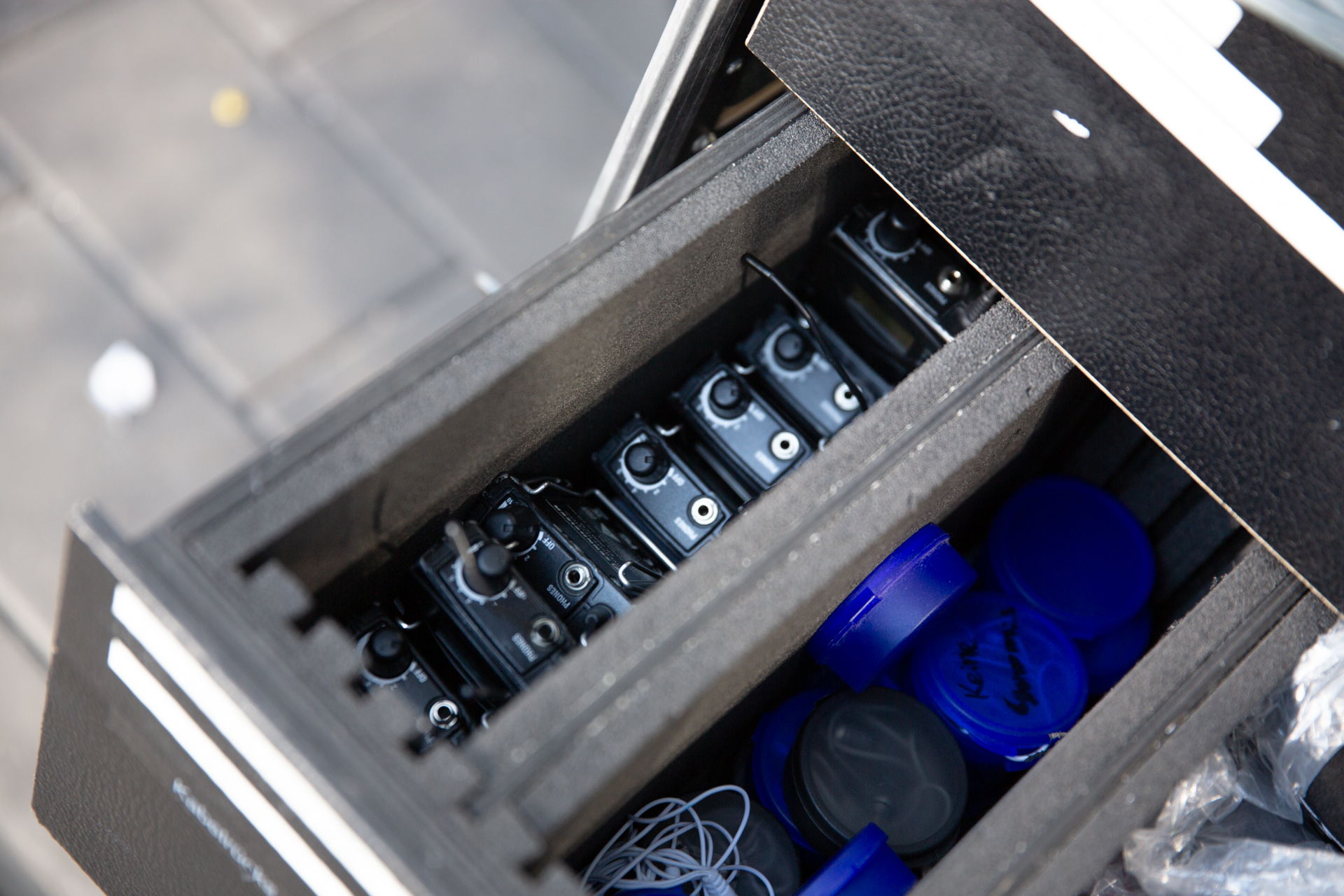
Wired camera microphones
TopVision has around 20 cameras in use during a game, a quarter of which are handheld cameras equipped with wired shotgun microphones. While handheld cameras for interviews use mono microphones, MS stereo microphones are fitted to the handheld cameras that are used to show the players coming onto the field, arriving by bus, or waiting for the match in the locker room.
“For example, we have an FX6 mounted on a gimbal, which means that you try to keep the weight down and use a microphone that’s as compact as possible,” Kersten explains. “Every gram of weight that you can save and every length that you can make shorter is, of course, always an advantage.”
The new MKH 8018 stereo shotgun microphone
Kersten adds: “In the stadium, we now have the MKH 8018 in regular use on our FX6 and the gimbal, and we’re absolutely delighted by both the handling and the sound. Especially on the small gimbal, a few grams of weight make a huge difference – and combined with the sound quality, it’s perfect as a camera microphone for live broadcasting.”
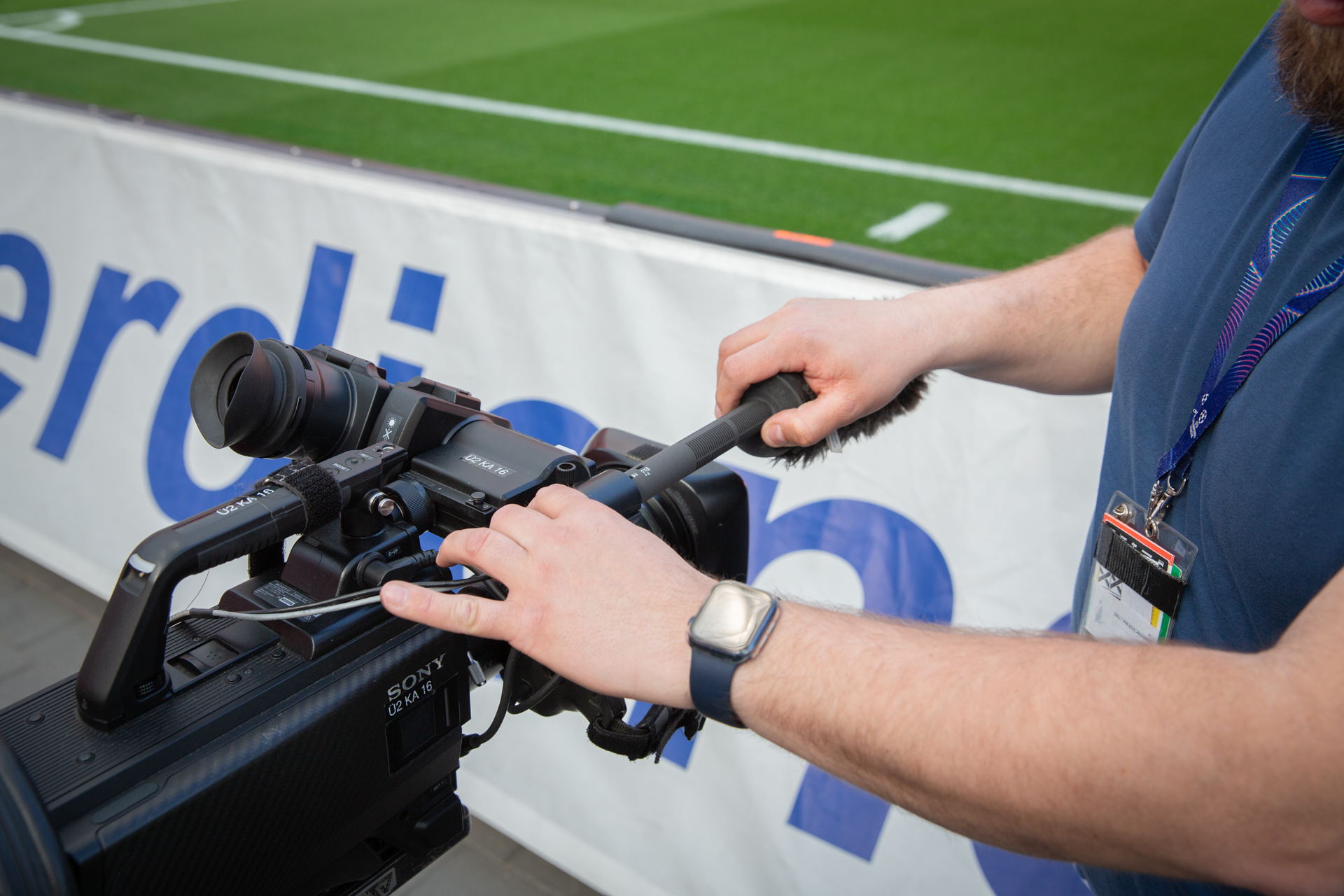
Ecki Kehrer goes into more detail: “The microphone features very good left-right localisation and a very good frequency response, and therefore provides a very clean and open representation of what is going on in front of the camera. We found its directivity to be better than that of the predecessor model, the 418-S. We were able to “listen in” even more closely when the teams were choosing ends before the match began. We were also impressed by the bass response, which was almost too deep compared to an MKH 8060, but we prefer this because you can always remove low frequencies by using a high-pass filter at the console, but you can’t add them if they’re not there. During the tests, we also considered using the microphone as a close-ball mike in three directions: 45°L, M, 45°R, which would have been possible without any problems with a similar sound character to that of an 8060. All in all, the 8018 is a very convincing product that we really enjoy using.”
(Ends)
The high-resolution images accompanying this media release, plus additional images, can be downloaded here.
Sports Broadcasting - TopVision's Ecki Kehrer and Daniel Kersten ensure authenticity in football broadcasting.docx
DOCX - 4.7 Mb
Sports Broadcasting - TopVision's Ecki Kehrer and Daniel Kersten ensure authenticity in football broadcasting.pdf
PDF - 913 Kb



